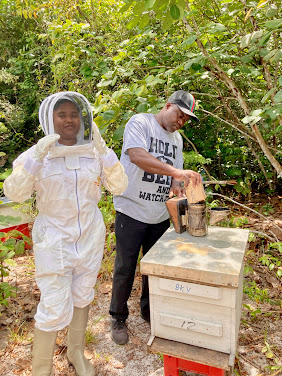Strengthening the Digital Branding and Online Marketing of Artisanal Kits in Guatemala
By Andrés Varona, Program Officer - Agriculture & Food Security
Through the manufacturing of educational kits, DIDART is a small Guatemalan enterprise that teaches children about the cultural heritage of the country. In order to spur community development, DIDARD purchases the materials that go into their kits directly from rural artisans from across Guatemala. Since 2015, Partner of the Americas’ Farmer-to-Farmer (F2F) program has been sending volunteers in order to assist the company with various organizational, financial, and sales aspects of their enterprise. In the latest F2F assignment, Kate Senn traveled to Guatemala City in order to support DIDART with a series of digital branding and online marketing efforts.
In preparation for her F2F assignment, Kate reviewed DIDART’s websites and social media platforms as well as identified areas that could help her draft a “Social Media Strategy Handbook” for the small company. Upon her arrival in Guatemala on August 13th, Kate had the opportunity to travel to various rural communities in order to see firsthand the locally-sourced materials and indigenous traditions that go into each of DIDART’s educational kits. In the village of Guanagazapa, for example, the volunteer was able to learn about the morros, a “hard-as-coconut-like fruit that can be hollowed and used for the musical instrument known as a chin-chin, souvenir bowls, or for making jewelry.”
DIDART Staff members with F2F Volunteer Kate Senn (Center) with F2F Field Officer Andrea Fion (Right
Once back at the DIDART office in Guatemala City, Kate began working alongside Anna Lucia, the company’s graphic designer. During her first week at the office, Kate led trainings on Pinterest marketing strategies, editorial calendars as well as social media branding. In the second week, the volunteer and Anna Lucia revised the interface of the DIDART’s new mobile app that DIDART in order to ensure that it was consistent with the company’s brand identity. At the end of the assignment, Kate generated a comprehensive ““Social Media Strategy Handbook” with a series of recommendations that DIDART can use to grow their web and social media presence. Some of these recommendations included:

1. Targeting key stakeholders (e.g. school teachers) with more personalized online /social media messaging such as “Are you a teacher in Guatemala? We want to hear from YOU!” Encourage them to be DIDART ambassadors”, receiving additional fluffy discounts or free stuff to support and promote the educational kits to their teacher friends.
2. Setting a monthly agenda for Social Media campaigns so posts do not need to be done last minute. Foresee posts about holidays, special celebrations, school year calendar, etc. Change the cover page photo with the season. This technique will allow DIDART staff to identify gaps in the schedule and plan out future content.
3. Leveraging the power of Pinterest in order to 1) create photos sequence of the educational kits (e.g. before, during, and after the manufacturing phases are complete), and 2) promote a link long Pinterest Pin, with a link to where to buy the specific kit (etsy, shopify, DIDART’s website).
4. Create quick speedy videos for each of the kits being produce and share them on YouTube and Facebook.




.png)

The Great Info for Thank You!!
ReplyDeleteWe are an Auckland based digital marketing agency comprised of ad enthusiasts who strive to find the right marketing mix for our clients.
This is very informative, Thanks for the sharing.
ReplyDeleteWHere to buy allergan-botox-online online
Buy azzalure online
Benefits Of buy neurobloc 1x5000iu online
Increase your butts,hips and boobs with the best quality hydrogel here online
Buy macrolane buttock injection 1500cc online
Buy 4-cprc crystal online
dysport-2x500iu-for-sale-online
Buy pmma buttock injection 2000CC – ARTEFILL online
Thanks for sharing nice information. Digital Marketing Agency in Dubai
ReplyDelete